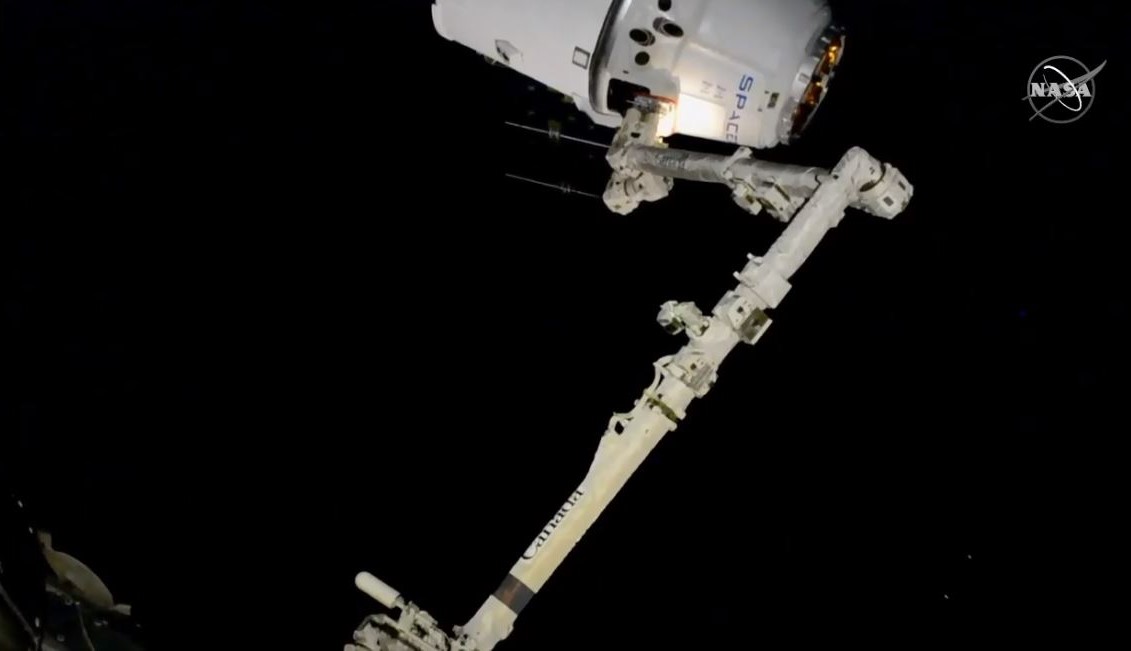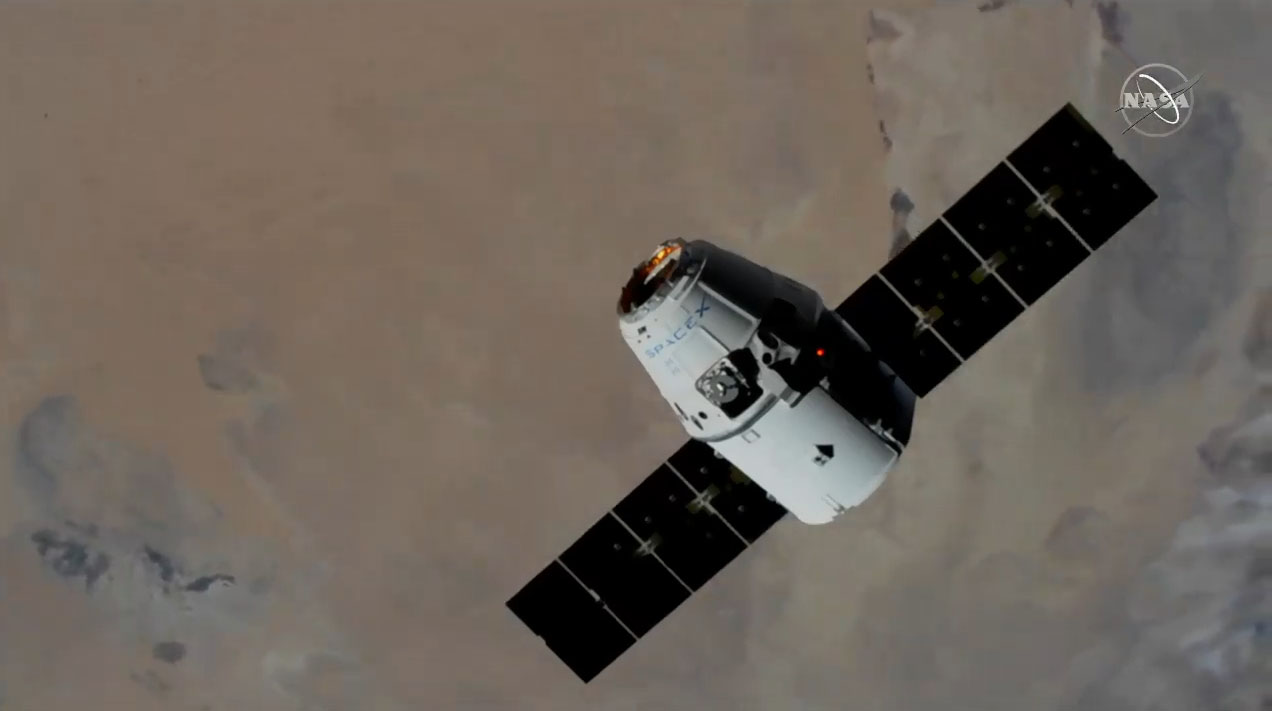SpaceX Dragon Arrives at Space Station with 'Robot Hotel,' Mice and More NASA Gear
A SpaceX Dragon spacecraft arrived at the International Space Station early Sunday (Dec. 8) to deliver tons of fresh supplies and equipment for NASA, including a "robot hotel" and some "mighty mice."
The Dragon cargo ship was captured by astronauts wielding a robotic arm at 5:05 a.m. EST (1005 GMT) as it sailed 262 miles (421 kilometers) over the South Pacific. The capture ended a three-day chase that began Thursday (Dec. 5) with Dragon's smooth launch from Florida. Less than three hours later, the spacecraft was securely attached to the station's Harmony module.
"I would like to congratulate all of the people in Houston and around the world who contributed to the launch, navigation and capture of Dragon," station commander Luca Parmitano of the European Space Agency said after capturing Dragon with the outpost's robotic arm. "They must know that whenever we welcome a new vehicle on board, we take on board also a little piece of the soul of everyone that contributed to the project. So, welcome on board."
Video: Watch SpaceX's Dragon Arrive at ISS in this Time-Lapse View
Related: Space Beer Experiment, Mice & More Riding on SpaceX's Dragon



SpaceX's Dragon at the International Space Station is delivering more than 5,700 lbs. of supplies (that's 2,585 kilograms). That cargo includes more than 2,100 lbs. (952 kg) of gear for 38 different experiments on the orbiting lab.
Among that science equipment is what NASA calls a "robot hotel" for the station's two Robotic External Leak Locators, free-flying robots designed to sniff out gas leaks on the space station.
There are two leak-hunting robots on the space station. The first launched in 2015 and was joined by a backup unit later.
Breaking space news, the latest updates on rocket launches, skywatching events and more!
Dragon is also carrying 40 intrepid mice as part of the "Mighty Mice in Space" experiment to study the effects of muscle and bone loss caused by prolonged exposure to weightlessness. The mice will live in four habitats on the station and will be compared with 40 other mice in similar habitats on Earth after returning in January.
Other experiments on Dragon include a beer experiment from Budweiser to test how barley seeds can grow in space. It's actually the fourth space experiment by Budweiser parent Anheuser-Busch to the space station.
NASA is also sending up upgrades for its laser-powered Cold Atom Lab on the space station, which aims to create the coldest place in space to study the quantum effects on atoms.
Today's delivery is the 19th resupply mission for NASA by SpaceX under the company's commercial resupply services contract. The mission, called CRS-19, is also a return to space for this particular Dragon spacecraft.
The Dragon capsule made its third trip to the station with CRS-19 after two previous cargo missions in September 2014 and July 2017. It is the second time SpaceX has used the same Dragon three times for a NASA cargo mission. The company's next mission, CRS-20, will do the same.
Dragon's CRS-19 mission will end on Jan. 6, when the spacecraft will return to Earth and splashdown in the Pacific Ocean off the coast of California. The spacecraft will return about 1,800 lbs. (816 kg) of scientific samples and gear to Earth when it returns.
- See the Evolution of SpaceX's Rockets in Pictures
- SpaceX's Crew Dragon Space Capsule Explained (Infographic)
- SpaceX to Launch Critical Crew Dragon In-Flight Abort Test No Earlier Than Jan. 4
Email Tariq Malik at tmalik@space.com or follow him @tariqjmalik. Follow us @Spacedotcom, Facebook and Instagram.


Tariq is the award-winning Editor-in-Chief of Space.com and joined the team in 2001. He covers human spaceflight, as well as skywatching and entertainment. He became Space.com's Editor-in-Chief in 2019. Before joining Space.com, Tariq was a staff reporter for The Los Angeles Times covering education and city beats in La Habra, Fullerton and Huntington Beach. He's a recipient of the 2022 Harry Kolcum Award for excellence in space reporting and the 2025 Space Pioneer Award from the National Space Society. He is an Eagle Scout and Space Camp alum with journalism degrees from the USC and NYU. You can find Tariq at Space.com and as the co-host to the This Week In Space podcast on the TWiT network. To see his latest project, you can follow Tariq on Twitter @tariqjmalik.
